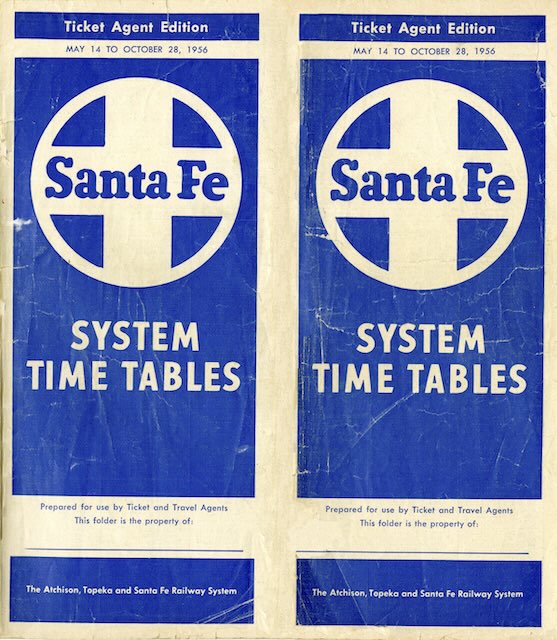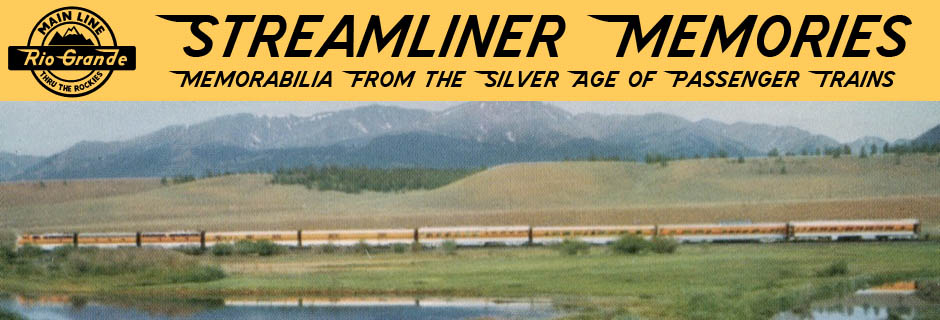With the disappearance of the Scout in 1953 and the California Limited in 1954, most of the trains on Santa Fe’s timetable were streamlined. A major exception was the Grand Canyon, which had heavyweight sleeping cars and other heavyweight equipment between Chicago and Los Angeles.
 Click image to download a 37.0-MB PDF of this 48-page timetable.
Click image to download a 37.0-MB PDF of this 48-page timetable.
Another, lesser-known exception was the California Special, which was a name applied to Houston-California service but which actually consisted of several different trains. First, a heavyweight sleeping car went between Houston and Temple on trains 65 & 66. At Temple, the car was attached to or detached from trains 75 & 76. These met 77 & 78 in Brownswood. Between Brownswood and Clovis, New Mexico the train continued as 75 & 76.
Meanwhile, trains 111 & 112 went between Dallas and Fort Worth carrying a Los Angeles-bound lightweight sleeper. In Fort Worth, this sleeper was attached to or detached from trains 77 & 78, which went to Brownswood, Texas. (These trains were also known as the Angelo.)
At Clovis, the heavyweight car from Houston continued to Oakland on the San Francisco Chief and the lightweight car from Dallas continued on the Grand Canyon. It seems puzzling that the heavyweight car would go on the lightweight train and vice versa. The timetable isn’t clear about whether there were any other heavyweight cars on the California Special, but it seems likely that head-end cars, the diners, and perhaps some of the coaches (which also went Houston-Oakland and Dallas-Los Angeles) were heavyweights.
Between Houston and Clovis, the California Special averaged about 42 miles per hour, while the Dallas-Clovis route averaged only 35. For some reason, the tracks between Houston and Brownswood were much speedier than those between Dallas and Brownswood.

Even with Santa Fe having trimmed its schedule somewhat, there were still about 60 trains in and out of LAUPT every day back in the mid 1950s. If a way could have been found to pool the car maintenance operations of the 3 railroads a considerable cost savings could have been realized. And maybe if a little creative thinking had been applied and a common pool of rolling stock established, equipment could be deployed among the 3 where needed, when needed.